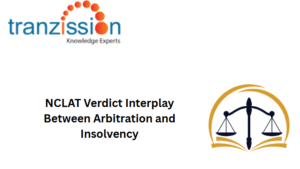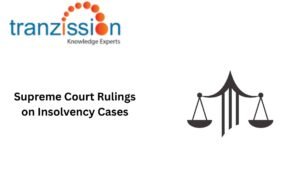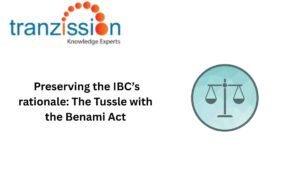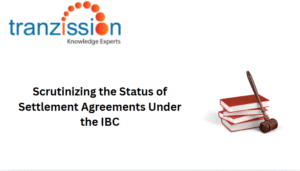
Scrutinizing the Status of Settlement Agreements Under the IBC
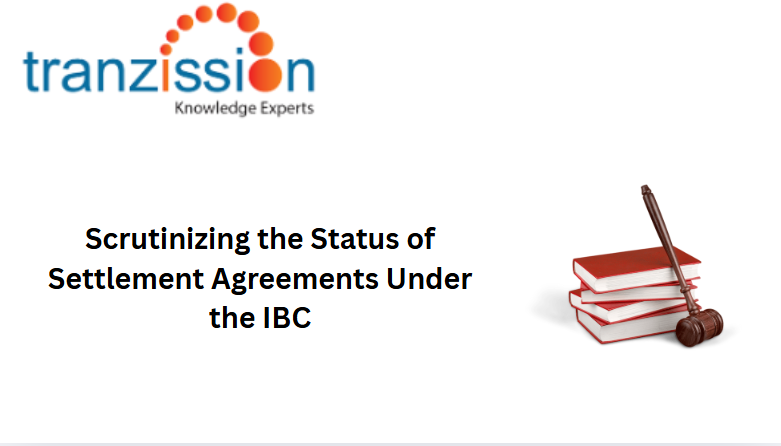
Table of Contents
Settlement Agreements Under the IBC are generally recognised and enforceable. Breaching a settlement agreement can have consequences, and the specific remedies available depend on whether the breach occurred before or after the initiation of the corporate insolvency resolution process (CIRP). This article looks into the status of settlement agreements under the IBC in detail.
Legal Framework Governing Settlement Agreements
Section 12A of the IBC:
This provision covers the withdrawal of insolvency applications post-admission upon settlement and the requirement of 90% Committee of Creditors (CoC) approval for withdrawal. It is to be noted that it has applicability before and after the initiation of the CIRP.
Read more : What is Form G in IBC – Invitation for Expression of Interest
Section 230 of the Companies Act, 2013:
Under the Companies Act, Section 230 includes a mechanism for compromise or arrangement between a company and its creditors. This section and section 12A of the IBC address different aspects of corporate distress, with distinct procedural requirements and applicability. Section 12A primarily deals with the withdrawal of an insolvency application initiated under the IBC, while Section 230 focuses on schemes of compromise or arrangement between a company and its creditors or members.
Enforceability of Settlement Agreements
The NCLT’s view is that the breach of the settlement does not constitute a “default” under the IBC that would automatically trigger the CIRP. However, if the settlement agreements were made part of the withdrawal order and included a revival clause, then a breach might revive the original CIRP. On the other hand, the NCLT, Delhi Bench opined that a breach of settlement does not meet the criteria for operational debt and therefore falls outside the scope of the IBC.
Procedural Challenges and Considerations
Timing of Settlement Agreements:
There may be negative impacts of entering into agreements at various stages of the insolvency process. Settlements reached after a liquidation order are legally complex, but generally, they are possible under specific conditions, such as the approval of the CoC and the NCLT. However, the legal implications depend on the specific circumstances and whether the settlement is in the best interests of all stakeholders.
Documentation and Approval:
There is a necessity to formalize settlement terms and obtain requisite approvals.
Comparative Analysis: Section 12A vs. Section 230
The key differences between section 12A of the IBC and section 230 of the Companies Act are:
- Section 12A aims to facilitate early resolution of insolvency cases through settlement, while Section 230 provides a mechanism for reviving a company facing liquidation.
- Section 12A can be invoked at any point after the admission of the insolvency petition, but before the resolution plan is finalised. Section 230 can be invoked even after the liquidation order.
- Section 12A requires an application from the original applicant and approval of 90% of the CoC, and section 230 can be initiated by the company or its liquidator.
- Section 12 allows for the complete withdrawal of the insolvency process, whereas section 230 proposes a scheme that may or may not involve restructuring of the company.
Practical Insights for Insolvency Professionals
Insolvency professionals (IPs) play a vital role in facilitating settlement agreements under the IBC, acting as intermediaries between debtors and creditors. They are responsible for gathering information, managing negotiations, and ensuring fairness and transparency in the process. They also report to the NCLT on the settlement process, including the resolution plan and asset valuation. Hence, IPs must ensure the clarity and enforceability in settlement agreements. They should also incorporate provisions for revival in case of breach and maintain comprehensive documentation while adhering to procedural requirements under the IBC, its rules, and regulations.
Conclusion
Settlement Agreements Under the IBC are significant in insolvency frameworks as they offer a mechanism for both creditors and debtors to resolve disputes and avoid the full insolvency process. They provide a pathway for restructuring debts, allowing debtors time to fulfill obligations. These agreements can also be utilized both before and after the initiation of the CIRP. However, they must be meticulously drafted and adhere to the legal protocols. All parties need to choose the appropriate legal route based on the specific circumstances of the case. In essence, settlement agreements are a crucial tool in the insolvency framework, providing a flexible and often more efficient way to resolve disputes and achieve a mutually beneficial outcome for both debtors and creditors.

